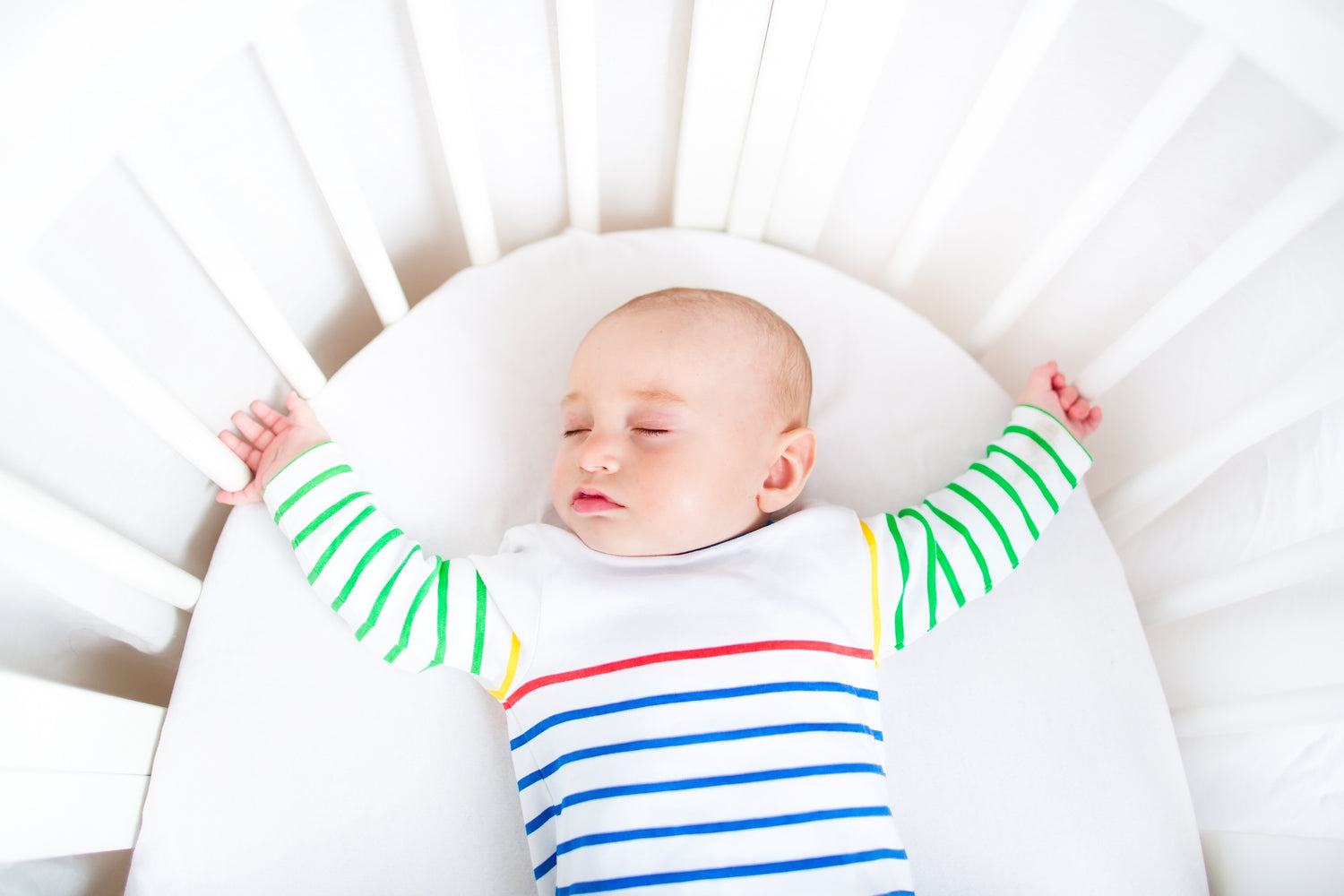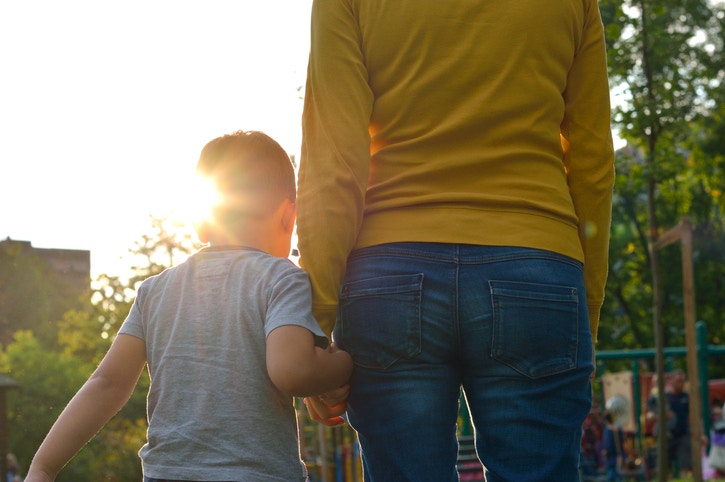One of the most challenging aspects of parenthood is making decisions about how, when, and where your baby should sleep. Many young parents spend hours researching this topic, arguing about nap schedules and who will do the middle of the night feeding. Parents lose a lot of sleep during those first few months – no exaggeration.
The American Academy of Pediatrics (AAP) recently announced a new recommendation that removes some of the mystery around best practices for new parents:
It is recommended that infants sleep in the parents’ room, close to the parents’ bed, but on a separate surface. The infant’s crib, portable crib, play yard, or bassinet should be placed in the parents’ bedroom, ideally for the first year of life, but at least for the first 6 months.
This new standard may come as a surprise to many parents. Why was this change made? What is the scientific reasoning behind this new recommendation? How will it impact families?
Reasoning behind the recommendation
The AAP determined that this new guideline was necessary for one critical reason – to decrease the risk of sudden infant death syndrome (SIDS) and sleep-related suffocation, asphyxia (trouble breathing or choking), and entrapment among infants.
SIDS is defined as the sudden death of an infant under one year of age when the cause of death remains unexplained after investigation. Unfortunately, experts are still not certain what causes SIDS. Some suggest it is related to respiratory and cardiovascular control and failure of the infant to wake up properly. Research points to brain abnormalities, genetics, and dangerous environmental factors (e.g., loose blankets and smoking households) as triggers.
Approximately 3,500 infants die each year in the United States from sleep-related infant deaths like SIDS. In 1992, the “Back to Sleep” campaign – now called the “Safe to Sleep” campaign – was launched. This effort helped reduce the risk of SIDS by about 50 percent. After this improvement in the 1990s, the overall sleep-related infant death rate has not changed much.
SIDS remains the leading cause of post-neonatal death, which occurs within 28 days to one year of age. Ninety percent of SIDS cases happen before an infant is six months old, peaking between one and four months of age. The AAP has determined that room-sharing can decrease the risk of SIDS by as much as 50 percent, so they believe that this new guideline is necessary to prevent future SIDS deaths.
Why room-sharing is effective
Based on numerous studies from around the world, the AAP believes that room-sharing is safer than both bed-sharing and solitary sleeping, or when infants sleep in their own room. The safest place for an infant to sleep is on a separate sleep surface designed for infants located close to the parent’s bed. Infants can be brought into the bed for feeding or comforting, but should be returned to their own crib or bassinet when the parent is ready to go back to sleep.
Bed-sharing, also sometimes referred to as co-sleeping, tends to be quite controversial. Epidemiological studies have shown that when a parent and infant share a bed, there is an increased risk of SIDS because the infant is exposed to potential suffocation, asphyxia, entrapment, falls, or strangulation.
Room-sharing is beneficial because the close proximity allows the parents to more effectively monitor their children while they sleep and respond to their needs throughout the night. Scientists explain that babies who sleep near their parents have more opportunity for their senses to be stimulated (by noises in the room, a parent’s touch, etc.), and therefore, spend more time in a lighter sleep to protect them from SIDS.
When babies sleep in separate rooms they tend to sleep longer and deeper. That may not always be healthy, and could be a risk factor and contributor to SIDS.
Sharing the room also increases parent supervision of the baby and allows for a faster response in the event of an emergency. Although this does not guarantee a baby’s safety, the expectation is that parents may become aware of potentially dangerous situations, such as the baby rolling over to the tummy position, an object covering the baby’s face, the baby choking, or the baby moving in a distressed manner.
In addition, infants within reach of their mother or father may receive more comfort and physical stimulation than if they were down the hall in another room, according to Dr. Lori Feldman-Winter, co-author of the AAP report. She added that mothers who are near their babies find it easier to breastfeed, which is known to reduce the chance of SIDS as well. Overall, room-sharing makes it easier for parents to feed, comfort, and watch their baby.
Potential challenges for parents
With every new medical breakthrough comes its challenges. The expectation that children should sleep in the same room as their parents until their first birthday may be a difficult adjustment for some parents for the following reasons:
- Parents may not be able to sleep well for a very long time, which can impact their own health and how they function throughout the day while they care for their child or try to focus on their job.
- The baby’s sleep may become too sporadic and interrupted because of the parents’ voices or snoring.
- Infants may become too reliant on parents comforting them every time they fuss or drop their pacifier.
- Parents may become too tempted to check on the baby constantly, causing increased anxious feelings and behavior.
- It may be very hard for the parents and child to separate into different rooms after the suggested time frame of one year is over.
- Parents lose privacy and opportunities for intimacy when the baby sleeps in the same room.
Other critical sleep recommendations
In addition to the room-sharing advice, the AAP also announced the following guidelines and reminders related to infant sleep conditions:
- To reduce the risk of SIDS, infants should be placed for sleep in the supine position (wholly on the back) for every sleep period by every caregiver until one year of age. Side sleeping is not safe and is not advised.
- Infants should be placed on a firm sleep surface (e.g., a mattress in a safety-approved crib) covered by a fitted sheet with no other bedding or soft objects to reduce the risk of SIDS and suffocation.
- Keep soft objects, such as pillows, pillow-like toys, quilts, comforters, sheepskins, and loose bedding, such as blankets and non-fitted sheets, away from the infant’s sleep area to reduce the risk of SIDS, suffocation, entrapment, and strangulation.
- Consider offering a pacifier at nap time and bedtime.
- Avoid overheating and head covering in infants.
What do you think about this new room-sharing recommendation? Let us know in the comments below.



